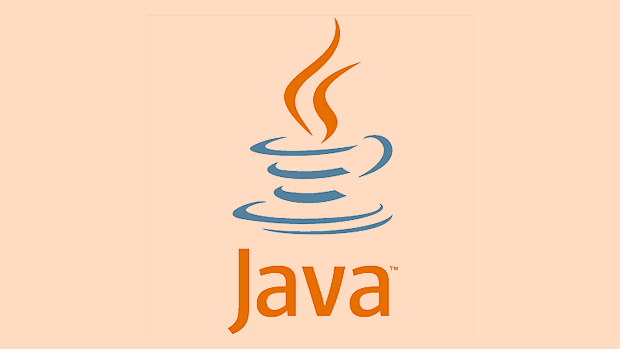How to compare two strings in Java?
Aug 04, 2025 am 11:03 AMUse the .equals() method to compare string content, because == only compare object references rather than content; 1. Use .equals() to compare string values equally; 2. Use .equalsIgnoreCase() to compare case ignoring; 3. Use .compareTo() to compare strings in dictionary order, returning 0, negative or positive numbers; 4. Use .compareToIgnoreCase() to compare case ignoring; 5. Use Objects.equals() or safe call method to process null strings to avoid null pointer exceptions. In short, you should avoid using == for string content comparisons unless it is explicitly necessary to check whether the objects are the same.

Comparing two strings in Java might seem straightforward, but there are important differences between using == and the .equals() method — and using the wrong one can lead to bugs.

Use .equals() to compare string content
The most important rule: don't use == to compare the values of two strings . The == operator checks whether two references point to the same object in memory, not whether the string contents are the same.
Instead, use the .equals() method to compare the actual characters in the strings:

String str1 = "hello";
String str2 = "hello";
if (str1.equals(str2)) {
System.out.println("Strings are equal");
} This returns true because both strings contain the same sequence of characters.
?? Example of what not to do:
if (str1 == str2) { ... } // Don't rely on this for value comparisonThis may work sometimes due to string interning, but it's unreliable, especially with strings from user input or
new String("...").
Handle case sensitivity with .equalsIgnoreCase()
If you want to ignore case when comparing strings (eg, "Hello" vs "HELLO"), use .equalsIgnoreCase() :
String str1 = "Hello";
String str2 = "HELLO";
if (str1.equalsIgnoreCase(str2)) {
System.out.println("Strings are equal (ignoring case)");
}This is useful for things like user login or search functionality where case shouldn't matter.
Compare strings alphabetically using .compareTo()
If you need to know the lexicographical order (dictionary order) of two strings, use .compareTo() :
String str1 = "apple";
String str2 = "banana";
int result = str1.compareTo(str2);
if (result < 0) {
System.out.println("str1 comes before str2");
} else if (result > 0) {
System.out.println("str1 comes after str2");
} else {
System.out.println("str1 and str2 are equal");
}- Returns 0 if strings are equal
- Returns a negative number if
str1comes beforestr2 - Returns a positive number if
str1comes afterstr2
Use .compareToIgnoreCase() if you want case-insensitive ordering.
Watch out for null strings
Calling .equals() on a null string will throw a NullPointerException . To avoid this, especially when the first string might be null , consider:
- Using
Objects.equals()(recommended):
import java.util.Objects;
String str1 = null;
String str2 = "hello";
if (Objects.equals(str1, str2)) {
System.out.println("Equal");
} else {
System.out.println("Not equal"); // This will print
} Objects.equals() safely handles null values — it returns true only if both are null , or both are non-null and .equals() returns true .
Alternatively, avoid calling .equals() on the potentially null string:
if ("hello".equals(str1)) { ... } // Safe even if str1 is null This way, you're calling .equals() on a literal (which is never null ).
So to recap:
- ? Use
.equals()for content comparison - ? Use
.equalsIgnoreCase()for case-insensitive checks - ? Use
.compareTo()for sorting/ordering - ? Handle
nulls withObjects.equals()or safe calling order
Basically, just don't use == unless you explicitly want to check object identity — and that's rare in everyday string comparison.
The above is the detailed content of How to compare two strings in Java?. For more information, please follow other related articles on the PHP Chinese website!

Hot AI Tools

Undress AI Tool
Undress images for free

Undresser.AI Undress
AI-powered app for creating realistic nude photos

AI Clothes Remover
Online AI tool for removing clothes from photos.

Clothoff.io
AI clothes remover

Video Face Swap
Swap faces in any video effortlessly with our completely free AI face swap tool!

Hot Article

Hot Tools

Notepad++7.3.1
Easy-to-use and free code editor

SublimeText3 Chinese version
Chinese version, very easy to use

Zend Studio 13.0.1
Powerful PHP integrated development environment

Dreamweaver CS6
Visual web development tools

SublimeText3 Mac version
God-level code editing software (SublimeText3)
 VSCode settings.json location
Aug 01, 2025 am 06:12 AM
VSCode settings.json location
Aug 01, 2025 am 06:12 AM
The settings.json file is located in the user-level or workspace-level path and is used to customize VSCode settings. 1. User-level path: Windows is C:\Users\\AppData\Roaming\Code\User\settings.json, macOS is /Users//Library/ApplicationSupport/Code/User/settings.json, Linux is /home//.config/Code/User/settings.json; 2. Workspace-level path: .vscode/settings in the project root directory
 How to handle transactions in Java with JDBC?
Aug 02, 2025 pm 12:29 PM
How to handle transactions in Java with JDBC?
Aug 02, 2025 pm 12:29 PM
To correctly handle JDBC transactions, you must first turn off the automatic commit mode, then perform multiple operations, and finally commit or rollback according to the results; 1. Call conn.setAutoCommit(false) to start the transaction; 2. Execute multiple SQL operations, such as INSERT and UPDATE; 3. Call conn.commit() if all operations are successful, and call conn.rollback() if an exception occurs to ensure data consistency; at the same time, try-with-resources should be used to manage resources, properly handle exceptions and close connections to avoid connection leakage; in addition, it is recommended to use connection pools and set save points to achieve partial rollback, and keep transactions as short as possible to improve performance.
 Mastering Dependency Injection in Java with Spring and Guice
Aug 01, 2025 am 05:53 AM
Mastering Dependency Injection in Java with Spring and Guice
Aug 01, 2025 am 05:53 AM
DependencyInjection(DI)isadesignpatternwhereobjectsreceivedependenciesexternally,promotingloosecouplingandeasiertestingthroughconstructor,setter,orfieldinjection.2.SpringFrameworkusesannotationslike@Component,@Service,and@AutowiredwithJava-basedconfi
 python itertools combinations example
Jul 31, 2025 am 09:53 AM
python itertools combinations example
Jul 31, 2025 am 09:53 AM
itertools.combinations is used to generate all non-repetitive combinations (order irrelevant) that selects a specified number of elements from the iterable object. Its usage includes: 1. Select 2 element combinations from the list, such as ('A','B'), ('A','C'), etc., to avoid repeated order; 2. Take 3 character combinations of strings, such as "abc" and "abd", which are suitable for subsequence generation; 3. Find the combinations where the sum of two numbers is equal to the target value, such as 1 5=6, simplify the double loop logic; the difference between combinations and arrangement lies in whether the order is important, combinations regard AB and BA as the same, while permutations are regarded as different;
 Troubleshooting Common Java `OutOfMemoryError` Scenarios
Jul 31, 2025 am 09:07 AM
Troubleshooting Common Java `OutOfMemoryError` Scenarios
Jul 31, 2025 am 09:07 AM
java.lang.OutOfMemoryError: Javaheapspace indicates insufficient heap memory, and needs to check the processing of large objects, memory leaks and heap settings, and locate and optimize the code through the heap dump analysis tool; 2. Metaspace errors are common in dynamic class generation or hot deployment due to excessive class metadata, and MaxMetaspaceSize should be restricted and class loading should be optimized; 3. Unabletocreatenewnativethread due to exhausting system thread resources, it is necessary to check the number of threads, use thread pools, and adjust the stack size; 4. GCoverheadlimitexceeded means that GC is frequent but has less recycling, and GC logs should be analyzed and optimized.
 python pytest fixture example
Jul 31, 2025 am 09:35 AM
python pytest fixture example
Jul 31, 2025 am 09:35 AM
fixture is a function used to provide preset environment or data for tests. 1. Use the @pytest.fixture decorator to define fixture; 2. Inject fixture in parameter form in the test function; 3. Execute setup before yield, and then teardown; 4. Control scope through scope parameters, such as function, module, etc.; 5. Place the shared fixture in conftest.py to achieve cross-file sharing, thereby improving the maintainability and reusability of tests.
 Understanding the Java Virtual Machine (JVM) Internals
Aug 01, 2025 am 06:31 AM
Understanding the Java Virtual Machine (JVM) Internals
Aug 01, 2025 am 06:31 AM
TheJVMenablesJava’s"writeonce,runanywhere"capabilitybyexecutingbytecodethroughfourmaincomponents:1.TheClassLoaderSubsystemloads,links,andinitializes.classfilesusingbootstrap,extension,andapplicationclassloaders,ensuringsecureandlazyclassloa
 How to work with Calendar in Java?
Aug 02, 2025 am 02:38 AM
How to work with Calendar in Java?
Aug 02, 2025 am 02:38 AM
Use classes in the java.time package to replace the old Date and Calendar classes; 2. Get the current date and time through LocalDate, LocalDateTime and LocalTime; 3. Create a specific date and time using the of() method; 4. Use the plus/minus method to immutably increase and decrease the time; 5. Use ZonedDateTime and ZoneId to process the time zone; 6. Format and parse date strings through DateTimeFormatter; 7. Use Instant to be compatible with the old date types when necessary; date processing in modern Java should give priority to using java.timeAPI, which provides clear, immutable and linear







